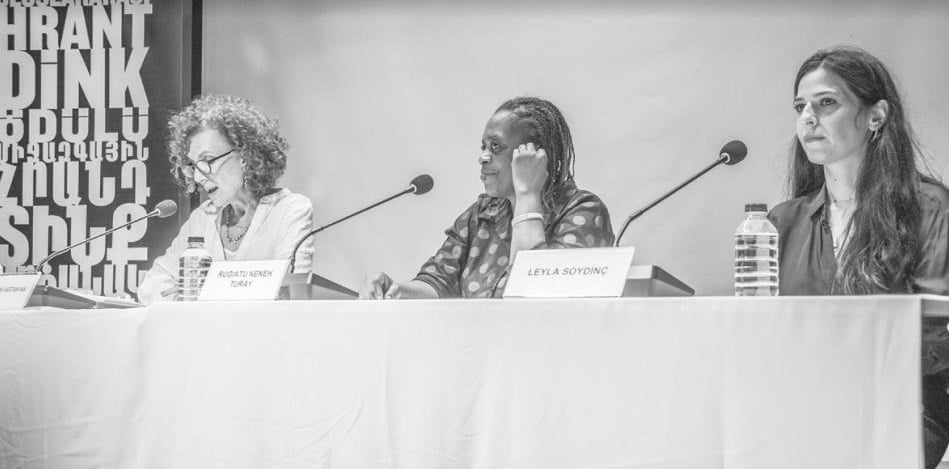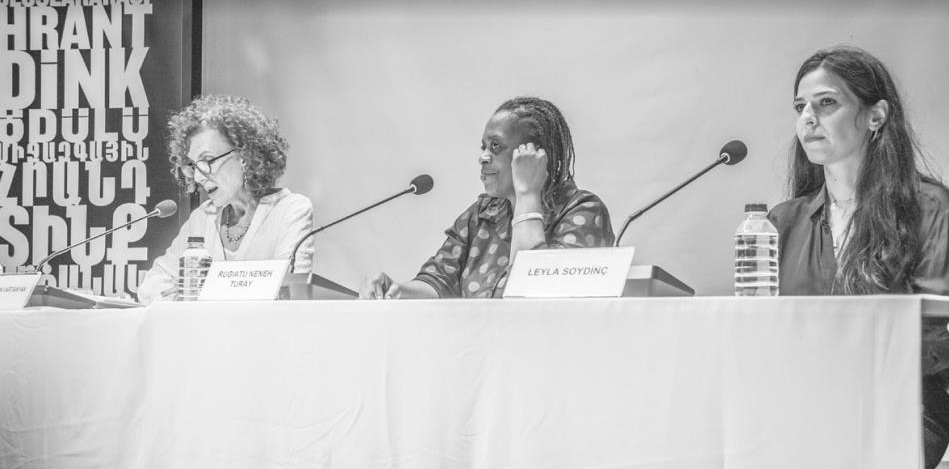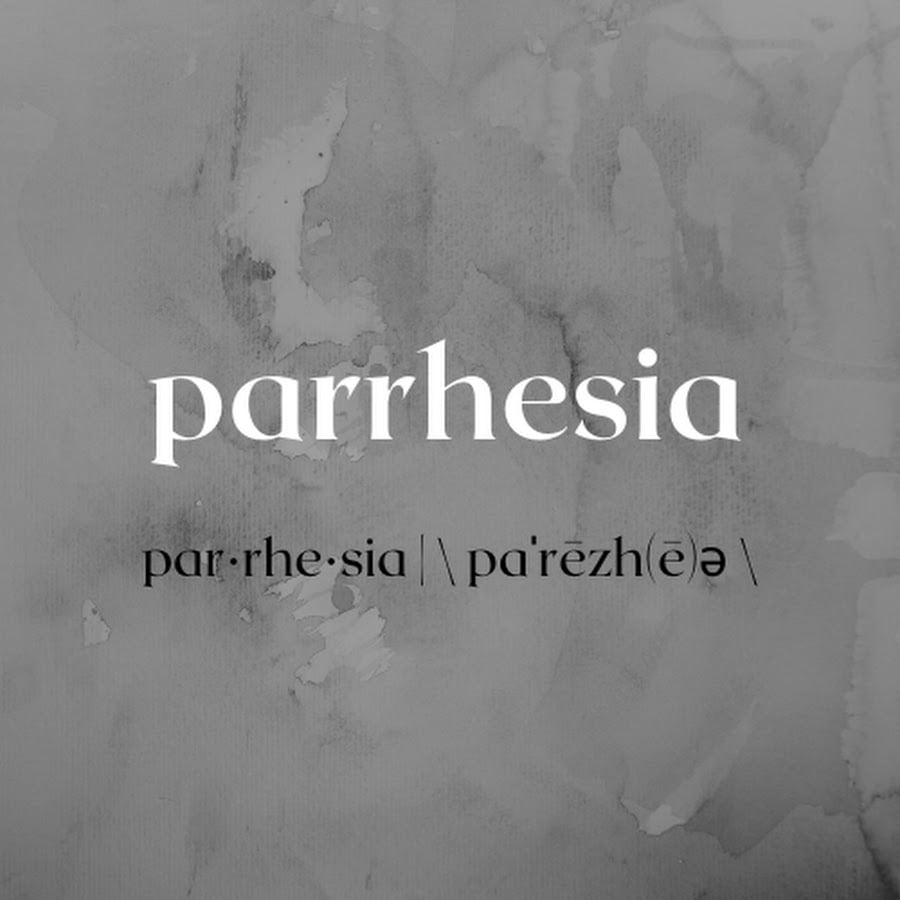Solidarity From “Women to Women” Against Gendered Violence


AYLİN VARTANYAN
The winners of the International Hrant Dink Award, given for the 16th time this year, were Rugiatu Neneh Turay from Sierra Leone and Mor Çatı Women’s Shelter Foundation from Turkey, who fight to develop policies against different types of violence against women and to help women gain their subjectivity.* Various interviews and programs with Rugiatu Neneh Turay and the volunteers of the Mor Çatı Women’s Shelter Foundation were published in the media. The reason I decided to write this article, taking the risk of repeating what has been said, is to remind women how women’s solidarity against patriarchal violence could be life serving, through the examples given. Turay is an activist who tells her story of genital mutilation (female circumcision), which she was subjected to at the age of 11, at every opportunity. After losing her mother, the genital mutilation she was subjected to under the guise of a ritual of transition from girlhood to womanhood, with the encouragement of her aunts, left her “crippled” for life, in her own words.
Over the years, Turay transformed her feelings of revenge against this tradition into constructive anger, and founded the Amazonia Initiative Movement (AIM) and began researching methods of combating this practice. One of the starting points was where patriarchal violence was inflicted by women on girls. We are talking about an intervention in the Bondo Bush region, where hygiene and post-intervention care were lacking, which caused young girls to become disabled and even lose their lives, and those who survived to be unable to experience sexual desire for the rest of their lives. The fact that the people who carried out this intervention were also women shows us a picture of how the patriarchal system normalizes a violent tradition through women.
Aware that it is not easy to shake established traditions, Turay started her work with women again to transform this intervention, which harms both physical and spiritual integrity, into a different practice. She organized an alternative ‘bloodless transition’ ritual instead of this established ritual of transition to womanhood. She convinced 400 women who practiced genital mutilation to give up this practice and that they could make a living in different ways. In 2019, after making a public statement, 45 women ‘soweis’ (those who practice the cutting ritual) and 75 young girls performed the first bloodless transition ritual. They spent two weeks in the bushes of the Bondo region, without fear of being cut, holding consciousness raising workshops about the rite of passage and celebrating the wisdom passed down from generation to generation with traditional dances. Working with very limited funds, Turay and her team are trying to create an education model in the Bondo Bush. She says that they also include men in their awareness training and invites women to re-embrace life with consciousness.
Founded by feminist women in 1990, the Mor Çatı Women’s Shelter Foundation has been an active institution in Turkey since the late 1980s, continuing its work against domestic violence. After the award ceremony, Mor Çatı volunteers Selime Büyükgöze and Leyla Soydinç, whom we met on a panel and on the ‘Hikâyenin Her Hâli’ (All Sides of the Story) program on Açık Radyo (Open Radio), reminded us that the march against violence, which took place in 1987 in Turkey, was the first example of how voices against violence be heard through a women’s march on the streets. They stated that they applied the feminist method of ‘woman to woman’ solidarity model with the support line they created and in the Mor Çatı shelters. Shelters are not places of salvation where ways to escape violence are explained or where women are shown the right path through a hierarchical method. Under the Mor Çatı, women (including volunteers) come together with the acceptance that they are subjected to different forms of patriarchal violence. Shelters are a meeting space as well a site of struggle where women seek refuge to protect themselves from the violence they experience at home and to find their own unique strength, resources and coping methods. In the shelters, women also gain awareness that male violence is a political act.
 PHOTO: Berge Arabian
PHOTO: Berge ArabianThe International Hrant Dink Award ceremony turned into a celebration for women this year, and later created a discussion area where we could talk about ‘woman-to-woman’ solidarity models. When it comes to Armenian women living in the diaspora, there is not enough space to talk about violence against women in the public sphere. Different practices of violence against women and girls that remain behind closed doors can be buried in silence. The scenes of domestic discord that we encounter in almost every work of Zaven Biberyan, one of the most important writers of Armenian literature, also reveal how the spiral of violence outside the home and financial instability damage the environment of trust within the home. Biberyan’s works, which show how fragile the Armenian ‘myth of the holy family’ can be, may have drawn reactions from readers during the years the author was alive for this reason.
As Parrhesia Collective, we started to launch the ‘Kov Kovi’ (Side by Side) online platform, where we can come together with Armenian women from different countries, ages and professions to address our common problems, in search of a solidarity model. Our next meeting with this small community, which has created a meeting place where we can share experiences and most importantly talk without being judged, is in October. We look forward to revisiting the theme of ‘home’ that was prominent in our first online meeting.
* You can watch the video recording of the entire award ceremony on the Hrant Dink Foundation's YouTube account.



